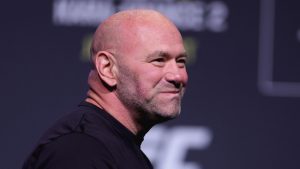Samsung has just revealed it has a cool new gadget waiting for release: the Samsung Galaxy Ring. You can guess a little about it from the name (like, it’s round and fits on your finger), but not much more is known.
February 12 update below. This post was first published on February 10, 2024.
Soon after it was announced in January, I got to see it, try it on and ask a bunch of questions about it. Here’s what I learnt.
First of all, nothing is set in stone just yet, Dr Hon Pak, head of Samsung Electronics’ digital health team warned me. The design of the rings I tried on my finger could change out of all recognition, with a different look, different colors, different materials. Think of them as prototypes, then.
Look And Feel
The rings I saw and felt came in multiple colors and finishes, including gaudy gold and subtle dark shades. I was told the ring was made of titanium, which would account for why it was so light. It felt about the same weight as the Oura Ring I wear every day and that’s 0.14 ounces or 4g, so this felt in the same ballpark. That’s important: one of the key features in a smart ring is that it should be light and unobtrusive enough to be worn at night, so people who feel a smartwatch is too heavy for night wear can still have their metrics tracked.
This is part of Samsung’s goal. As Dr Pak explained, “With the Ring specifically, as you can imagine a wearable is as good as people who wear it. If people don’t wear it, it won’t matter.”
The design was understated, but distinctive with—for now, at least—a gently concave channel running round the outside. This felt good. So good, in fact, that I imagine I may find myself fiddling with it on my finger, rather as I dip my thumbnail into the dimple on the Oura Ring. On the Oura, this has the additional benefit of helping me to keep the ring in the optimum orientation on my finger for the sensors to work. There’s no similar anchor on the Galaxy Ring prototype.
The channel felt subtle and is less pronounced than it looks in the image above, which is what it looked like at the launch event.
Functions
Samsung was tight-lipped about exactly what metrics the Ring will measure. Sleep tracking seems a given, and perhaps blood oxygen monitoring. The Korean FDA has approved Samsung’s techniques for monitoring sleep apnea, so it’s likely that this will be a goal for the Ring as well.
Dr Pak says the readings on the Ring are of comparable accuracy to those the Galaxy Watch can manage, though he wouldn’t say which of the many metrics the Watch does will filter across to the Ring.
What’s clear is that Samsung is serious about tracking our health in detail. Dr Pak said, “The trend in general with wearables is that what was on-demand is becoming more passive, instead measuring in the background. As more of that happens with more features, then I think patterns that we don’t even know about are becoming clearer. What’s happening is the wearable is giving us context in ways that we’ve never known.”
Release Date
Samsung’s official line is it will be this year. In answer to the question, “Will it be first half or second half?” the answer was yes. More seriously, Dr Pak said it would be more likely to be the second half of 2024. No guidance was given on pricing.
You can also read an in-depth opinion piece about the Galaxy Ring from Janhoi McGregor, here on Forbes.
February 11 update. As you’ll see, I signed off just above with the prospective release date for the Samsung Galaxy Ring. Dr Pak wouldn’t be drawn into too many specifics. This year, for sure, and more likely second-half than first half, but no more detailed than that.
A new report by Android Police has lighted on a little more clarity—though it’s not enough to put a reminder in your calendar just yet. The new report quotes a LinkedIn post from Daniel Seung, the global head of B3B Wearable/IoT/Accessory, according to SamMobile. That post has now been deleted but according to SamMobile it included the phrase, “new health and wellness wearable product in the 2nd half” of this year.
Well, that corroborates what I was told, but is no more specific. However, as SamMobile points out, the new Ring is a very big deal for Samsung, so it’s not likely that it will slip it out in a press release.
Which means it’s likely to appear at one of Samsung’s Galaxy Unpacked events. The company usually holds two of these each year. One comes in the beginning of the year, like the January unveil of the Galaxy S24 series where the Ring was first teased. And the second in the late summer. Last year, this took place in Seoul, the company’s home turf for the first time, in the last week of July. The company’s latest folding phones were announced on Wednesday, July 26.
So, that looks like it could be favorite to appear alongside this year’s folders, perhaps. The timing of the summer Unpacked varies, though I’d think it wouldn’t be any earlier than last year, that is late July. Since so many people are on holiday in August, I’d think it won’t be in the early weeks of that month, so late August or early September are possibilities. Though there is the small matter of Apple’s regular-as-clockwork iPhone launch in early to mid-September to be factored in as well. Whatever, it looks like there’s not likely to be more than six months to wait for this intriguing new product.
February 12 update. When I met Dr Pak, he also revealed a few more details about the Ring, while keeping his cards close to his chest. He came close to confirming that the Ring will track sleep, which is what many are expecting. It makes sense, since wearing a ring at night is much less intrusive than a smartwatch. And it’s the signature feature on rival rings like the excellent Oura, which tracks multiple metrics while you’re sleeping.
But Dr Pak did point out that “tracking sleep has been a very significant focus for us,” with sleep apnea screening detection now approved by the Korean FDA, thanks to the Galaxy Watch tracking blood oxygen levels, called SPO2. “We are able now, using SPO2 dips that occur at night to say, we think you are pretty good risk for having sleep apnea. As you know, sleep apnea is a huge problem. It’s hugely under-diagnosed and the implication of sleep apnea for cardiovascular and other diseases is pretty significant.”
He also said that the accuracy of data that can be drawn from the finger is “pretty comparable” to that from the wrist. “We have certain thresholds that have to be met. Otherwise, we wouldn’t introduce the product.” That doesn’t confirm that SPO2 tracking will be on the ring, but given that Samsung has technology for this area and rival devices like Oura offer it in a ring, I’m sure this will be on board.
As for sleep tracking on the Ring, Dr Pak said, “Some signals would be cleaner between one wearable and another, and then there’s anatomic variations between individuals, but by and large sleep, an activity which is largely the initial capability, in those regards we’re not seeing any major differences.”
The benefits for a wearable that’s tracking details in the background are considerable. “I think the trend in general with wearables is that what was on-demand is becoming more passive, with measuring in the background. As more of that happens with more features, then I think patterns we don’t even know about will become apparent. Wearables are giving us context in ways that we’ve never known. Now, we go to a doctor and do a test once every six months and see the results as normal. But in between things have changed, gone up and down. The context would change: if the doctors knew, if the individual knew, it would fundamentally change some of the management and lifestyle choices. For the first time it’s giving us opportunities for change in ways that weren’t possible.”
Read the full article here





